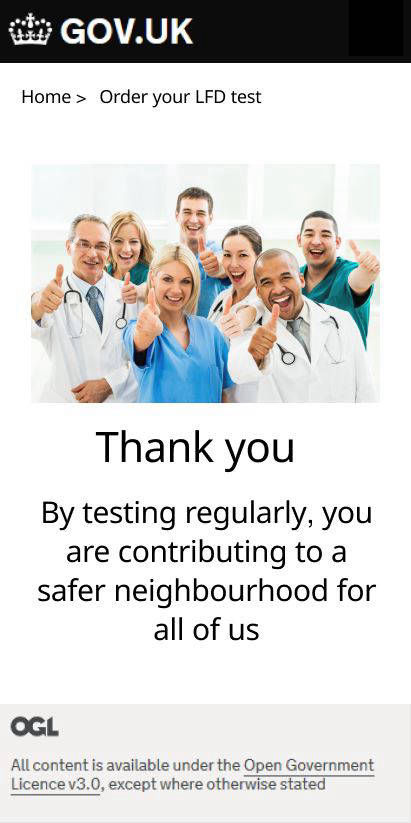
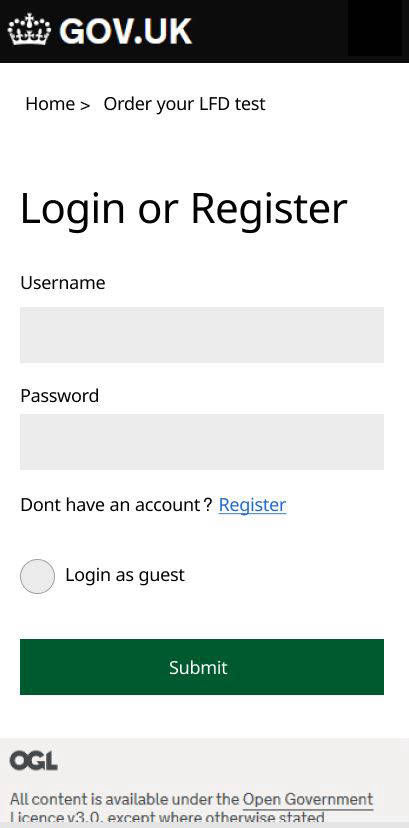
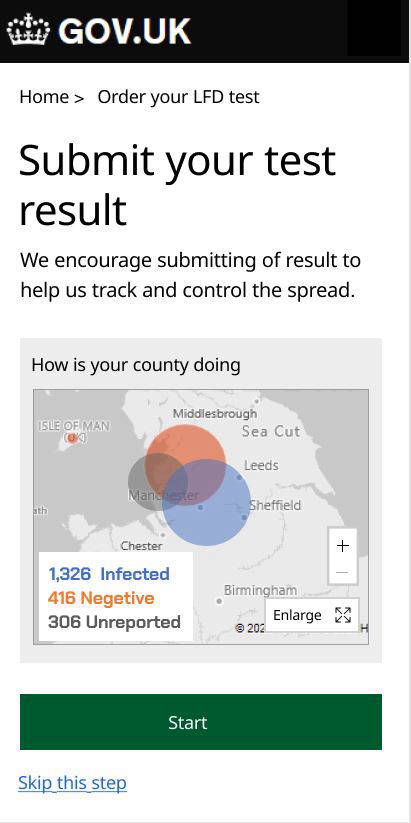


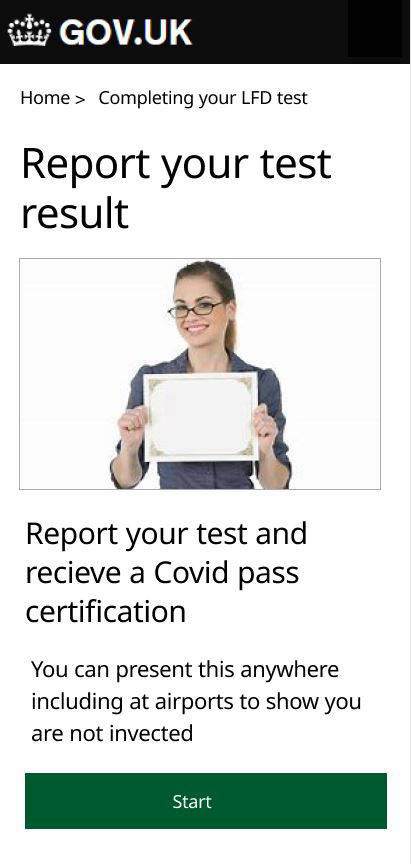



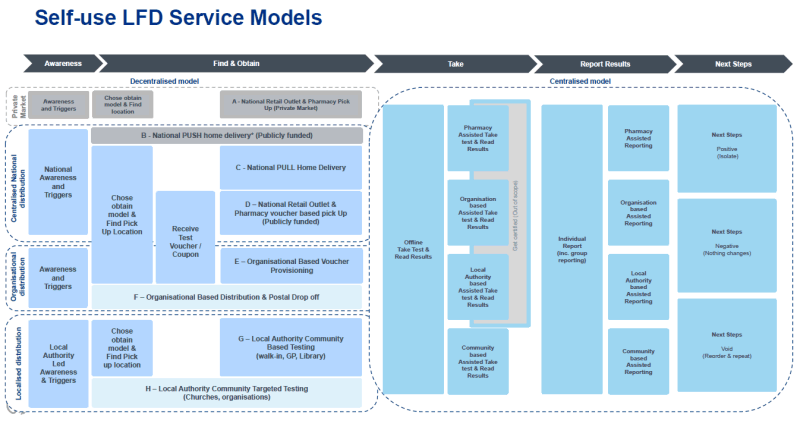
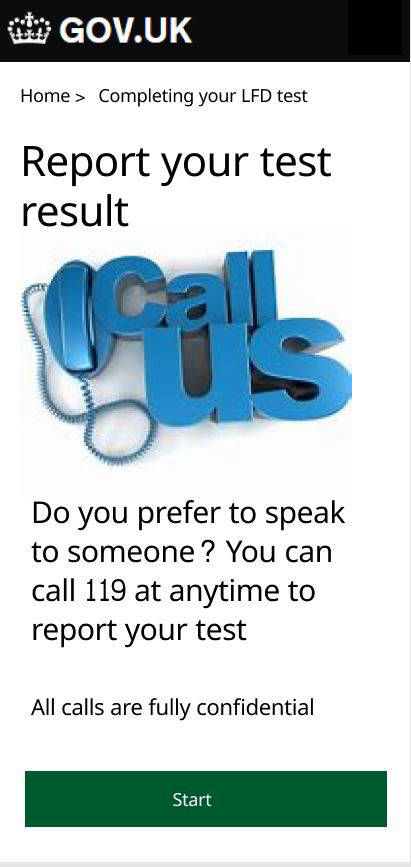

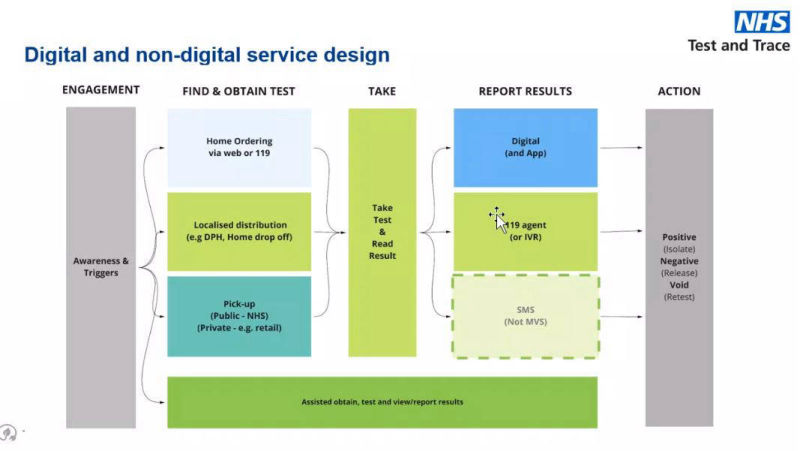


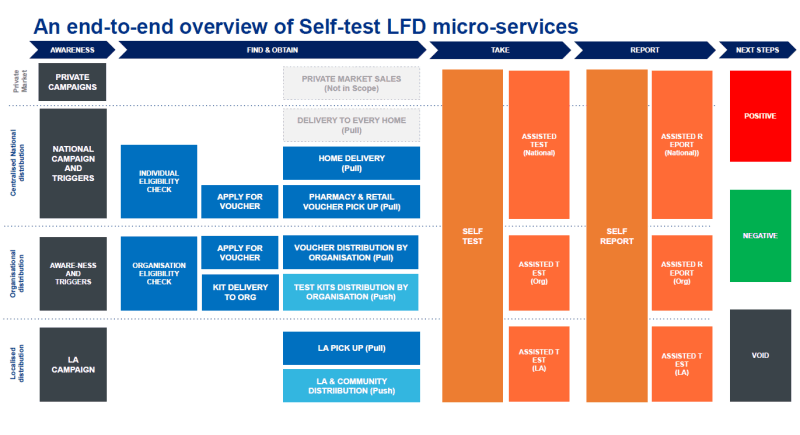
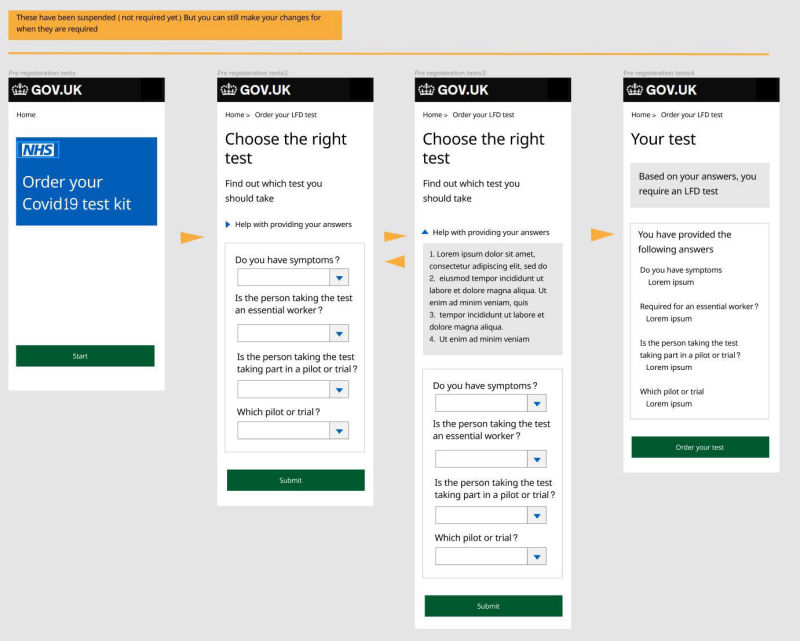
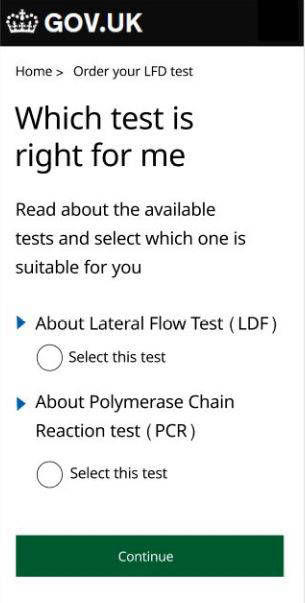
The project focused on enhancement of the customer experience and discovery of opportunities for improvement for the test trace and isolation program. It encompasses Improvement of the service delivery, as well as research, planning and management of all combined efforts of the Department of Health to curb the spread of the Covid19 virus across England. My role as the interaction designer within my team was to pioneer a seamless digital experience for users, and essentially improve their participation for a successful program.
The service provides temporary sites where samples are taken from individuals via PCR tests (Polymerase Chain Reaction), Samples are processed at newly created network of laboratories, and results communicated back to customers. Infected individuals are instructed to isolate themselves from others (handled and supported by our 'Isolation teams'). These customers are also asked to provide details of their recent close contacts, who may also need to isolate themselves (handled and supported by our 'Trace teams). The procurement and management of the NHS COVID-19 app also falls within the program. The app is aimed at enhancing the contact tracing process by enabling users with a compatible smartphone to check symptoms, order tests and receive results and advice. Also allowing a user to scan a barcode when entering pubs, shops, and other similar places so they can be informed if they have recently been in touch with a confirmed case or infected person. This helps to break chains of transmission, keep people safe, and avoid the need for further societal and economic restrictions.
There were twelve teams or squads in the program, with each team having its own area of focus which could change depending on the progress of the overall program. My team consisted of seven members, charged with overseeing the introduction of the LFD (Lateral Flow Device) testing. This form of COVID-19 testing enabled users to order their test kits which are then self-administered at home for quicker results. We used agile methodology and had delivery targets with show-and-tell meetings attended by stakeholders that included ministers from the government. Our overall focus was to produce recommendations for LFD service delivery. which involved planning and mapping of both online and offline journeys for the customer.
According to American sociologist Earl Robert Babbie, "Research is a systematic enquiry to describe, explain, predict and control an observed phenomenon". This was quite a challenge with the phenomenon of COVID19, as our target user included every member of the public. In addition to that our research methods where restricted due to on-going lockdowns at the time, hence we could not meet our users face to face.
We started by defining the user touch points and the type of users that will interact with the solution at each step. I was very passionate and heavily involved with this discovery phase. I worked with the researchers in my team to organize and conduct various user interview session via web conference, and we were able to acquire invaluable qualitative data of user perceptions of the existing PCR tests journey and program. We learnt their pain points and faults, behavioural preferences and essentially opportunities for enhancements. This provided us some leverage to ensure the LFD (at home) tests would work. I was very motivated, as this was going to inform and influence the work I will be doing later.
We worked on mapping the service delivery journeys and had three interlinking pathways for (a) acquiring the test kit, (b) taking the test, and (c) reporting the result.
1.. Online orders (or digital journey). This option enabled customers to order their LFD test kit for delivery to their home or specified location. It was a very important option as it encouraged users to stay at home and not exposing themselves to contracting the disease.
2.. Collection in person. Customers are also able to collect their kit in local pharmacies with a voucher code with is issued upon registration using their NHS number. The voucher system was in place to ensure that only eligible people could collect the kit as they were provided free of charge.
3. Telephone orders. This was handled by NHS 111 call service. It was favourable to senior citizens or elderly customers as it meant they could simply pick up a phone and request the test for delivery.
As the interaction designer I oversaw the digital journey and was very eager to kick off the design. I ran several design workshop sessions to brainstorm with colleagues then used Figma and the governments GDS principles to produce responsive (mobile first) pages in low fidelity for testing. I was very focused on delivering a seamless experience of very high standards. My aim was to keep the design extremely simple and usable for every age group. This essentially meant that there will be little emphasis on aesthetics (which is also encouraged by GDS). I took up the challenge to tackle specific issues encountered during our service delivery planning. These included (a) how to get customers to retest frequently. Test kits came in packs of 3, 7 and 14. So that it catered for families and large groups. But this was also to encourage frequent testing and there was little sign that users will comply with this. Hence i suggested incentivising users by encouraging them with phrases like. "By testing frequently, you can protect loved ones especially if you are asymptomatic". (b) Getting users to report their test results. This was in scope as it helped the NHS to track infections and provide support. It had all sorts of problems as users could fake results and we could never ascertain if it were an individual’s genuine result, not someone else's. There was no legal obligation for this, so it remained up to the customer to comply. But I applied incentives here too and the presentation was hailed by several users during the early tests.
We had frequent stakeholder meetings, often attended by senior government employees like Dido Harding etc. After a lot of hard work, iterations, and refinement our LFD service delivery proposal was successfully signed off for implementation.